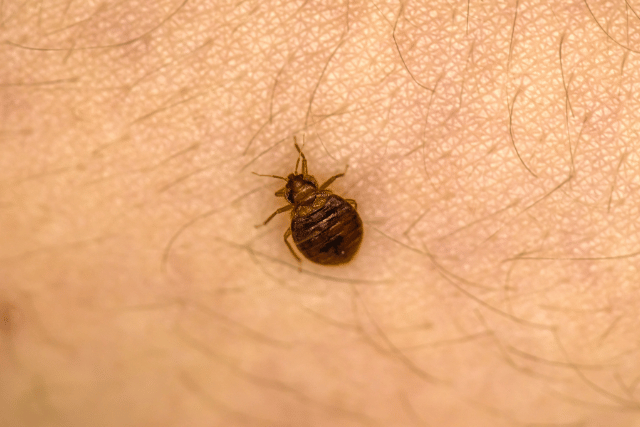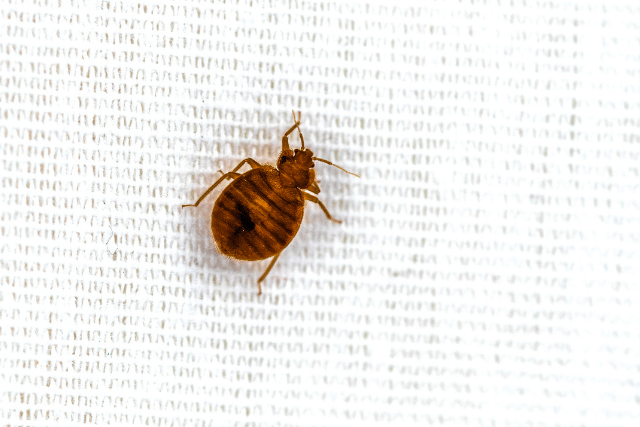As an Amazon Associate I earn from qualifying purchases.
When the lights go out, and the world falls asleep, a tiny predator awakens, ready to feast on the unsuspecting. To truly understand the horror of a bedbug infestation, we must first answer the spine-tingling question: What do bed bugs eat?
To truly understand how to combat these pests effectively, it’s essential to delve into the intricate details of their diet. In this blog post, we will unravel the mystery surrounding bed bugs’ dietary preferences, exploring the various sources of sustenance that fuel their infestations. You’ll be better equipped to protect your home and family from these nocturnal bloodsuckers by gaining insights into what bed bugs eat.
What Do Bed Bugs Eat?
Bedbugs are a notorious nuisance, and understanding their dietary habits is crucial in the fight against these bloodsucking pests. This blog post will delve deep into the question, “What do bed bugs eat?” We’ll explore their dietary preferences and provide valuable insights into each type of food source they rely on. With this knowledge, you’ll be better equipped to prevent and manage bedbug infestations.
1. Human Blood:
Bedbugs, like vampires of the insect world, primarily feed on human blood. This is their preferred and most common source of nutrition. Bedbugs extract blood by piercing the skin with their needle-like mouthparts. They are attracted to the carbon dioxide and body heat emitted by humans, making sleeping individuals their primary target.
2. Animal Blood:
While human blood is their top choice, bedbugs are opportunistic feeders who will feed on the blood of various warm-blooded animals when human hosts are unavailable. Common animal hosts include pets like dogs and cats, rodents, and birds. If you have an infestation, it’s essential to consider the possibility of other animals serving as potential hosts.
3. Avian Blood:
Some bedbug species have a particular preference for avian hosts. These bed bugs are commonly found in poultry farms or places with high bird populations. They adapt to the different temperatures and environmental conditions associated with avian hosts, making them a unique subspecies.
4. Other Bedbugs:
In rare instances, bedbugs may engage in cannibalism. This occurs when resources are scarce, and bed bugs feed on other bed bugs. It’s a survival tactic rather than a primary food source, as they preferentially choose human or animal blood when available.
5. Dormant Periods:
Bed Bugs can survive for extended periods without feeding, depending on environmental conditions and life stage. During their dormant periods, which can last for several months, bedbugs can remain hidden without feeding. However, they will actively seek out a host when they sense the presence of carbon dioxide and body heat.
Do Bed Bugs Impact Our Ecosystem?
Although bedbugs are mostly a nuisance to humans, they can have minor indirect impacts on the ecosystem, overshadowing their effects on human health and well-being. Here are a few ways bedbugs can potentially influence the ecosystem:
1. Pesticide Use:
The control and eradication of bedbug infestations often involve chemical pesticides. While these pesticides target bedbugs, they can have unintended consequences on non-target species and the environment. Pesticides can harm beneficial insects, such as pollinators (bees and butterflies) and natural predators of other pests.
2. Resilience to Pesticides:
Over time, bedbugs have developed resistance to many chemical pesticides. This resistance has led to the development of stronger and more persistent pesticides, which can have broader ecological impacts and contribute to the buildup of pesticide residues in the environment.
3. Altered Human Behavior:
Bedbug infestations can lead to changes in human behavior, such as increased use of pesticides, excessive washing of bedding and clothing, and disposal of infested items. These behavioral changes can indirectly affect wastewater treatment systems and potentially lead to the release of pollutants into the environment.
4. Stress and Health Impacts:
While bedbugs do not directly impact wildlife or ecosystems, the stress and psychological toll caused by infestations can indirectly affect human health. Stress-related health issues can influence people’s interactions with nature and their willingness to engage in conservation efforts.
How To Get Rid Of Bed Bugs?
Getting rid of bedbugs can be challenging and time-consuming, but taking immediate action to prevent an infestation from spreading is essential. Here’s a detailed guide on how to get rid of bedbugs:
1. Confirm the Infestation
First and foremost, ensure that you have a bedbug infestation. Look for signs such as live bugs, shed exoskeletons, tiny white eggs, and reddish-brown fecal stains on bedding, mattresses, and nearby areas.
2. Isolate Infested Items
Contain the infestation by isolating items like bedding, clothing, and curtains. Seal them in plastic bags to prevent the bugs from spreading to other areas of your home.
3. Declutter Your Home
Reduce clutter in your home, as it provides hiding places for bedbugs. Removing unnecessary items will make it easier to identify and treat infested areas.
4. Wash and Heat-Treat Bedding
Wash all bedding, linens, and clothing in hot water (at least 120°F or 49°C) and dry them on high heat for at least 30 minutes. This will kill bedbugs and their eggs.
5. Vacuum Thoroughly
Use a vacuum cleaner to thoroughly clean your home. Pay special attention to areas where bed bugs are likely to hide, such as mattress seams, crevices in furniture, and along baseboards. Dispose of the vacuum bag or clean the canister immediately to prevent bedbugs from escaping.
6. Consider Using Encasements
Protect your bed from bed bugs by encasing your mattress and box spring with bed bug-proof covers. Doing this can trap any bed bugs inside and prevent them from biting you.
7. Apply Diatomaceous Earth (DE)
Diatomaceous Earth is a natural, non-toxic powder that can be sprinkled around infested areas. It dehydrates and kills bedbugs by damaging their exoskeletons.
8. Steam Treatment
Steam-clean infested areas with a high-temperature steam cleaner. The heat will kill bedbugs and their eggs.
9. Apply Insecticides (If Necessary)
If the infestation is severe, consider using insecticides. It’s recommended to hire a licensed pest control professional for this step. Follow the instructions on the pesticide label carefully, and only use products labeled for indoor use and specifically designed for bedbugs.
10. Monitor and Repeat
Continue monitoring your home for several weeks to ensure that all bedbugs are eradicated. Be prepared to repeat treatments if necessary, as bedbug eggs can resist some treatments, and new bugs can hatch.
11. Prevent Reindentation
To prevent a reindentation, be cautious when traveling, inspect hotel rooms for signs of bedbugs, and wash and dry your clothing and luggage on high heat after returning home. Seal cracks and crevices in your home to eliminate hiding spots for bedbugs. Consider using bed bug interceptors under the legs of your bed to trap any bedbugs trying to climb up.
12. Consult a Professional
If your infestation is severely persistent, or unsure about the best action, consult a licensed pest control professional. They have the expertise and tools to effectively eliminate bedbugs.
Remember that getting rid of bedbugs can take time, and persistence is key. It’s essential to address the problem promptly to prevent it from worsening and spreading to other areas of your home.
Final Words
In conclusion, understanding what bed bugs eat is essential to tackle an infestation effectively and prevent future encounters with these resilient pests. As we’ve learned, bedbugs primarily feed on the blood of humans, making us their preferred hosts. However, they are adaptable creatures that can resort to other warm-blooded animals when necessary, and in extreme circumstances, they may even turn to cannibalism. Knowing their dietary habits, you can protect your home and loved ones from these nocturnal bloodsuckers. So, the next time you wonder, “What do bed bugs eat?” Remember that knowledge is your most potent weapon against these elusive pests.
You can also read:
1.What Do Wildcats Eat? A Dive into the Diet of These Fierce Felines
2.What Do Screech Owls Eat? A Glimpse into Their Palate
3.What Do Pigeons Eat? A Comprehensive Guide
4.What Do Male Mosquitoes Eat? From Nectar to Nutrients
Amazon and the Amazon logo are trademarks of Amazon.com, Inc, or its affiliates.



